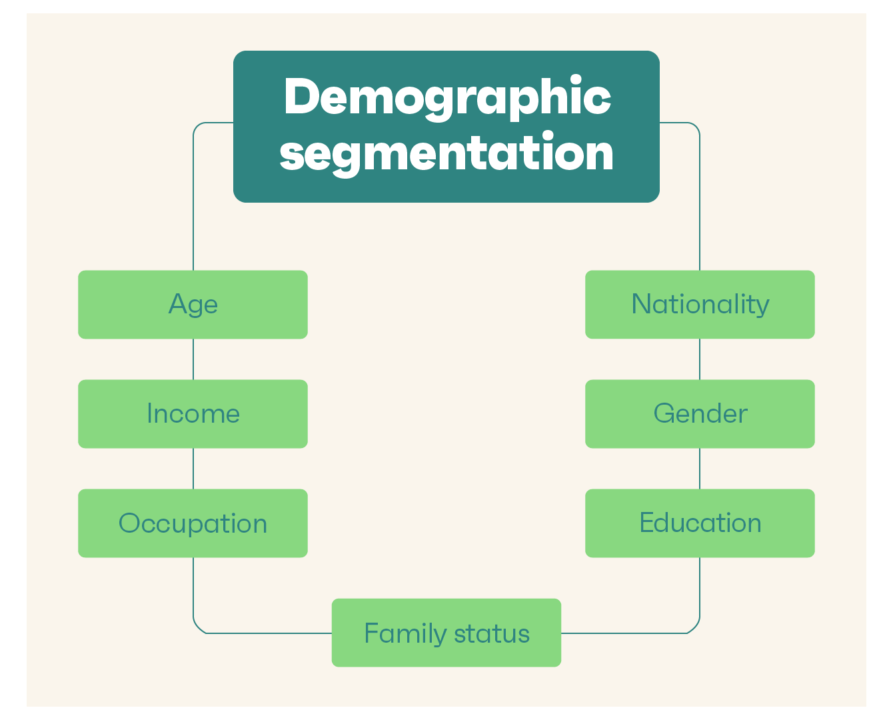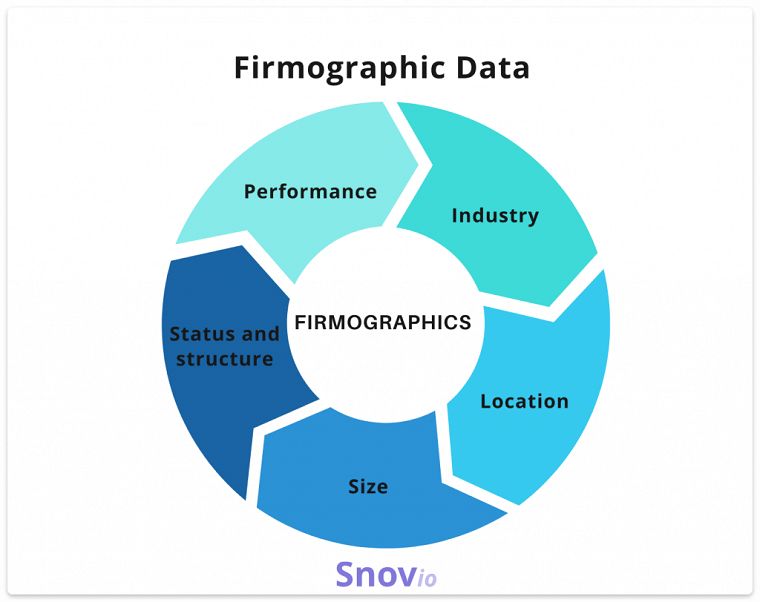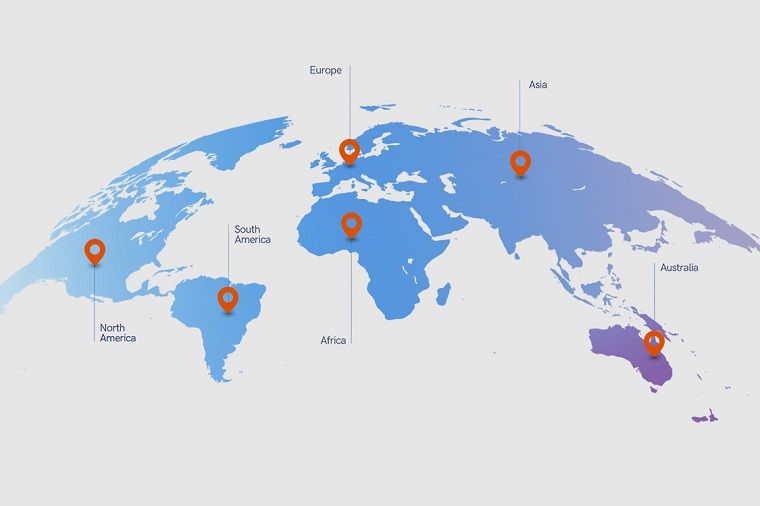Market Segmentation: What It Is, Types, and Real Examples

Market segmentation separates the market into submarkets or segments that respond differently to market offerings. It attempts to identify distinct groups of current or potential customers and then create marketing strategies that appeal to each group.
What Is Market Segmentation
To be more precise, market segmentation divides a broad market into various sub-markets, or segments, with similar needs, wants, and behaviors. Segmentation is crucial for any business attempting to develop an effective marketing strategy.
It helps the organization identify the various groups of customers or prospects within a market and decide which groups are most likely to purchase the company's products or services. As a result, segmentation enables the company to target its marketing efforts more effectively, resulting in greater customer satisfaction and a more profitable bottom line.
Types of Market Segmentation
There are five types of market segmentation, and you should choose the one that fits your business needs. As there is more than one option available, the one you choose for yourself might not be the same as your competitors are using, which gives you a competitive edge.
With that being said, let's take a look at the five types of market segmentation you can rely on for your online business.
1. Demographic Segmentation
Demographic segmentation is the most common type on which online businesses rely when they need to break down a potential market. In this method, you have to categorize your audience based on observable differences like age, gender, designation, marital status, income, religion, ethnicity, etc.

It is the most common type of market segmentation but not the best option when you're about to start dividing your audience. Using demographics with other segmentation types is considered better, so you must focus on that.
An example of demographic segmentation is selling alcohol online. When it comes to selling alcohol, you will not like to reach ineligible people as one must be above 21 to consume it. You'll be wasting your time and money if you target a set audience without keeping the "age" factor in mind.
2. Firmographic Segmentation
Firmographic segmentation is pretty similar to demographic segmentation. The way business owners classify people, filmographic segmentation allows you to break down firms and businesses.

This method is beneficial for B2B businesses to choose the firms that would be interested in buying the products or services. The factors that help you identify firms and businesses are industry, size, number of employees, organization, turnover & profit, etc.
3. Psychographic Segmentation
Psychographic segmentation is a lot like demographic data, but instead of focusing on a customer's physical or observable attributes, it delves more into what motivates them. When you choose psychographic segmentation, the data you create will include the customer's hobbies, interests, values, goals, beliefs, lifestyle, personality traits, etc.

The difference between demographic segmentation and psychographic segmentation is that demographic will tell you about a person's age but the psychographic segmentation will tell you what they enjoy, what they want to achieve, what sport they follow, and how they would like their personal life to be.
4. Behavioral Segmentation
If you observe how your customers behave and engage with your brand, you'll be able to modify your messages and posts what suit their behavioral patterns. You can use tools such as Google Analytics to find out your customers' online habits easily. It might take a bit more research to establish your customers' habits if you have a physical store.
When you need to collect the data for behavioral segmentation, you target their spending habits, conversion rates, browsing patterns, brand interactions, reviews, number of visits, etc.
When it comes to placing the products in the right direction, behavioral segmentation is the best type of market segmentation. With the help of behavioral segmentation, you can optimize your store, decide the best layout for it, find the solution for abandoned carts, and choose the best places to advertise your products or services.
5. Geographic Segmentation
Geographic segmentation is the practice of dividing a population of potential customers into different groups based on geographic location. This sort of segmentation usually relies on distance, reducing the likelihood that a potential customer will purchase a given good or service.

For instance, a business might market a certain product or service to one geographic area and a different product or service to another area in the same country. Or, a business may offer different prices for the same product or service in different geographic areas within the same country.
The best example that we can give for geographic segmentation is selling footwear or apparel. You must choose the right destination if you want to sell overcoats or boots. If you go with Hawaii, people there will not buy overcoats, and you may have to make changes to your marketing tactics.
Real-Life Examples of Market Segmentation
For some, market segmentation can be a complicated thing to understand. In that case, we've come up with some real-life examples that will help you understand it better.
1. Volkswagen
Volkswagen is a popular brand that sells top-quality vehicles worldwide, and it is the perfect real example to show how market segmentation helps. So, if you see a Volkswagen vehicle, say Polo, you'll come across terms like "robust," "hatchback," and "affordable."
However, the main thing is that Volkswagen is responsible for producing other world-class brands like Audi, Lamborghini, and Porsche! So, the brand offers different types of vehicles worldwide and knows well how to segment its market to earn profit. They work on market segments and create unique business strategies to target different types of people.
2. Victoria's Secret
Another example of market segmentation is Victoria's Secret. We'll consider their brand PINK which targets teenagers only. Victoria's Secret offers products mainly to women, but their sub-brand PINK only targets teenage girls and young women.
Moreover, the brand is shifting its focus to the men who need to buy gifts for their girlfriends and wives. Victoria's Secret's prices reflect the company's targeting of a relatively affluent customer segment who will have additional income to spend on lingerie or mid-priced undergarments.
3. Coca-Cola
There's no doubt that Coca-Cola understands its customer base well and the way it has been keeping itself on the top proves it. The brand offers countless products worldwide and markets them in ways that they appeal to almost every individual.
The company uses recyclable packaging, caffeine-free cola, sugar free-cola, and even energy drinks for people belonging to different age groups. It also focuses on wrapping up the products on different labels and colors, in addition to seasonal offers to target a large base of customers.
4. Kellogg's
People know Kellogg's as a cereal manufacturer, but they are more than that. The brand focuses on almost every factor of market segmentation and gets the best results for itself. From classic Cornflakes to tasty Pop-Tarts, Kellogg's knows how to target their customers whether they want to enjoy what they're eating or need to stay conscious about their health.
The company targets every factor, whether it's customers' demographics, behavior patterns, or location. The brand uses geographic segmentation to ensure each breakfast item matches customers' appetites and habits based on where they live. For example, Kellogg's cereals are different in Europe than they are in the US.
Top 3 Benefits of Market Segmentation
Applying market segmentation methods is highly recommended by marketing experts, but it takes a lot of effort and resources for the implementation. However, market segmentation can improve your company's health as you get the following benefits:
1. Makes Resources More Efficient
Marketing segmentation is a powerful tool that allows businesses to focus on specific demographics or customers. By targeting a specific audience, businesses can save money and resources that would otherwise be spent on promoting products to the entire market. In addition, marketing segmentation allows businesses to be more precise with their marketing approach, making it an essential tool for any business looking to succeed.
2. Makes Your Marketing Campaigns Better
Obviously, when you understand your audience and know what they need, you create better marketing strategies. You can communicate with your audience and give them a clear description of your brand values and how your products/services can be beneficial. With market segmentation, you only focus on the audience that'll understand what you're offering, and it eventually saves your time, money, and effort.
| Get Started Now to Grow Your Online Business with the Best AliExpress Dropshipping Tool - DSers! |
A more targeted marketing approach is key when selling niche items, such as dental tools. There's no use in spending millions of dollars on a marketing campaign that targets a large audience when only a small portion of them will have an interest in your product. Instead, by focusing your marketing efforts on those who are most likely to convert (in this case, dentists), you'll be able to save money and see better results.
3. It Enhances Your Brand Image
The marketing segment is the specific group of people that a company wants to target with its advertising. Once the market segment is identified, management has to consider what message to communicate to that group. As your messages reach a set audience that is well-classified to your preferences, your brand image will improve. You can also focus on different customer experiences to create your next campaign, and market segmentation will also help you there.
Final Words
With market segmentation, you can break down your potential customers as per their location, behavior, hobbies, and other factors.
This ensures that the company can properly invest in each client segment, leading to more successful marketing campaigns that are better able to target the specific needs of each group.
To read such interesting blogs about business ideas and marketing tips, follow DSers blog page.












 Company
Company
 Why Choose DSers
Why Choose DSers
 Blog
Blog
 Help Center
Help Center




 Live Chat
Live Chat